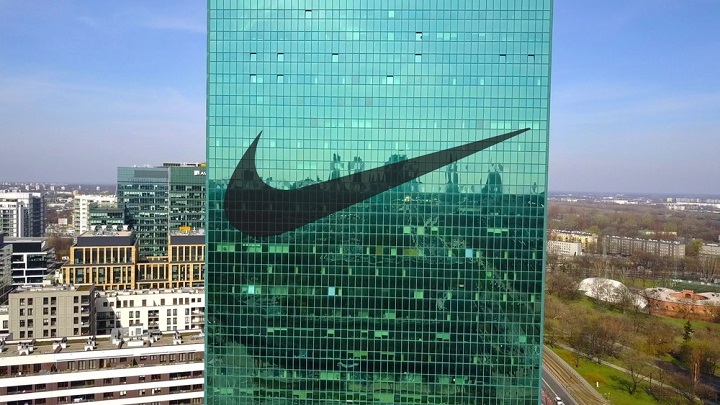Big-name athletic brand Nike (NYSE:$NKE) is planning to make some changes — but it may take some time for investors to feel the shift. On Thursday, June 14, Nike announced a new company plan called the Triple Double Initiative. The initiative — aimed at increasing online sales — will double Nike’s innovation, speed, and direct connection with its customers. The announcement was met with mixed reviews, as one of the actions of the initiative is to cut 2% of the company’s global workforce. That’s about 70,700 employees out of a job.
Some investors have already taken action as a result. After downgrading his rating of NIke from buy to neutral, JPMorgan (NYSE:$JPM) analyst Matthew Boss said that while investors were encouraged by Nike’s willingness to look forward and adjust their company strategy accordingly, change takes time — especially with the marketplace disruption in North America and high promotional activities that is putting pressure on Nike’s mid-teens profit.
It’s a radical move for Nike, Jim Cramer, founder of The Street and the portfolio manager for Action Alerts PLUS, argued of Nike’s initiative. While the recent jobs cuts may drive the company’s stocks down, Cramer said, it will come back up at a later time.
While Nike is still ruling the market, Wedbush (traded privately) analyst Christopher Svezia said, this fact may change soon. Long-time rival Adidas (ETR:$ADS) have been moving forward, taking market share from Nike for the past 18 months, Sviezia noted. Even Puma (ETR:$PUM) has also been taking market share from Nike, though to a lesser degree than Adidas.
Svezia has kept his neutral rating on Nike, arguing that the athlete-wear company’s challenges lies within foreign exchange and more expensive operating costs. As a result, Nike could see a “flat to down” earnings per share in 2018, Svezia said. Even the U.S. market could be trouble for Nike. “Broadly the NIke brand continues to lose share while Jordan continues to dominate in a subdued category (basketball),” Svezia noted. “Changes in MAP (minimal advertised pricing) have allowed retailers to promote more aggressively but could lead to continued (pressured) orders as retailers work through higher inventory levels.”
To add further concern, Svezia also took note of the first quarter reports of Foot Locker (NYSE:$FL) and Dick’s Sporting Goods (NYSE:$DKS) — two of Nike’s biggest retailers. The results have been quite subpar. As such, while NIke’s management of its expenses has been impressive, Svezia doubts that the company will be able to keep it steady next year. Still, Svezia voiced his approval for Nike’s new initiatives.
Featured Image: Depositphotos/© alexeynovikov










